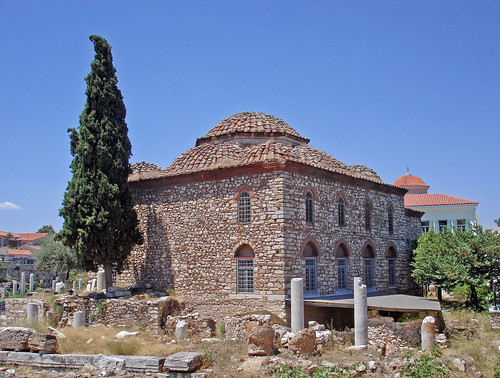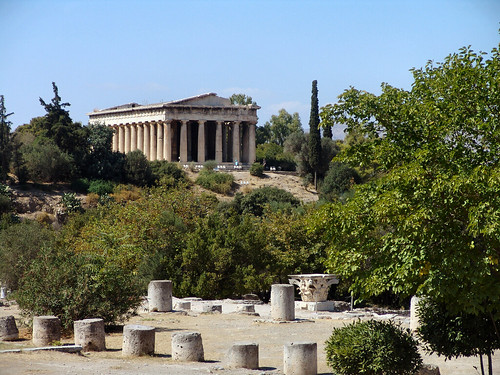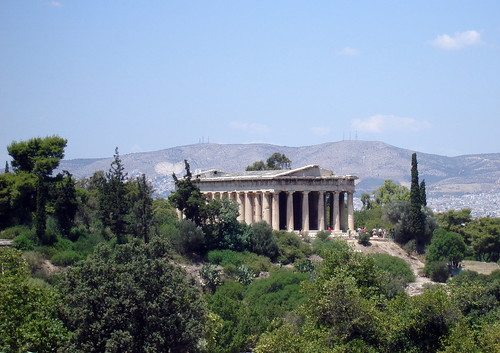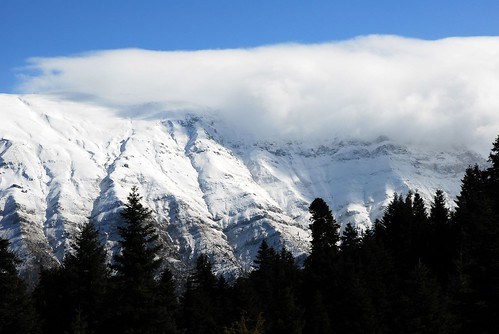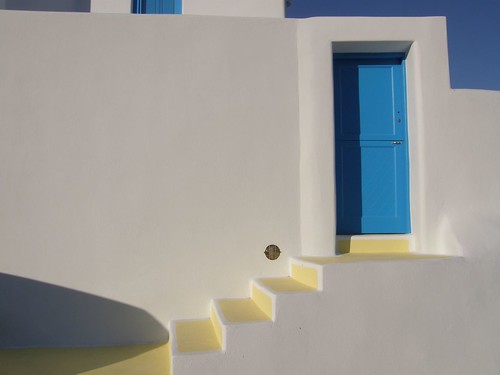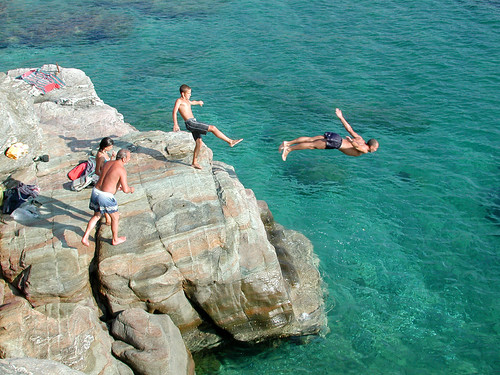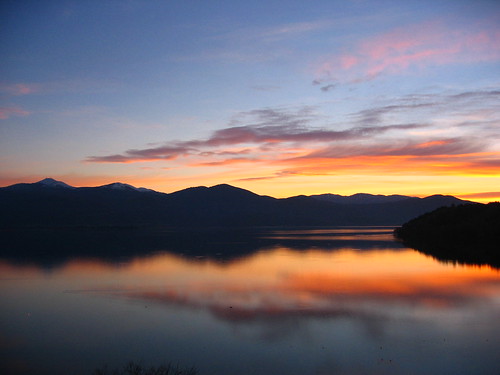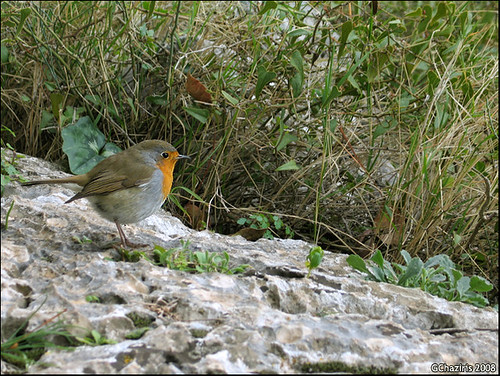This is located outside the western entrance to the Roman Market. It was constructed in the 1st century B.C. by the astronomer Andronikos from Kyrrhos in Macedonia and is shaped like an octagonal tower. It served as a form of meteorological station since it combined a sundial and water clock and also had a weathervane to show the direction of the wind. Each face is adorned with a relief representing the wind blowing from that direction, hence its nickname in Greek "aerides" meaning "the winds".
Same building as here and here
Saturday, March 1, 2008
Clock of Andronikos Kyrrestos
Tzisdarakis Mosque in Monastiraki
The mosque overlooking Monastiraki Square was built in 1759 under Ottoman rule. After the liberation of Athens, it was transformed into a museum, where a collection of traditional Greek handicrafts was exhibited. Nowadays, the Tzami, as it is known by the Athenians, houses the Pottery Collection of the Museum of Greek Folk Art. The collection, donated by V. Kyriazopoulos, consists of splendid works by contemporary artists but also includes everyday ceramic objects, as well as tourist souvenirs.
Fethiye Djami in the Roman Agora
The Turkish mosque lies on the north side of the Roman Agora. It was constructed in 1456 A.D. on the ruins of an Early Christian basilica.
Stoa of Attalos
The Stoa of Attalos (also spelled Attalus) is recognised as one of the most impressive stoa in the Athenian Agora. It was built by and named after King Attalos II of Pergamon who ruled between 159 BC and 138 BC.
More info here
Temple of Hephaestus
Ground level view of the Temple of Hephaestus in the Roman Agora.
Temple of Hephaestus
The Temple of Hephaestus, also known as the Hephaesteum or Hephaesteion, in central ancient Athens, is the best-preserved ancient Greek temple in the world. It was also called the Theseion, or Temple of Theseus, due to a belief current in Byzantine times that the bones of the legendary Greek hero Theseus were buried there.
The Temple of Hephaestus was built in 449 BC on a site with a commanding view of the Athenian Agora.
More info here
Agioi Apostoloi
Agioi Apostoloi tou Solaki, Ancient Agora
The church of the Holy Apostles is the oldest church in Athens (1020) and stands near the southern entrance of the Ancient Agora. It was built in the early 11th century. It was restored to its original form in 1954-57 and stripped of its 19th century additions. Inside, you can admire its fine Byzantine frescoes.
Blue Door - White Wall
Blue door and white wall at a house at Akrotiri, Santorini. White and Blue are the main Greek colours... Photo taken on 08.07.2007
Reached #173 in Explore...
Robin - Erithacus Rubecula- Κοκκινολαιμης
During summer and spring When the earth is warm and food is abundant we seldom encounter the permanent residents of Mikri Varasova climbing crag in Parnitha. Things are different in winter when the frozen earth is barren. Then the robins become exeptionally bold, ofter coming as close as a mere meter politely asking for food. To hear their characteristic voice farewelling the passing day is a bonus after a good day of climbing.


